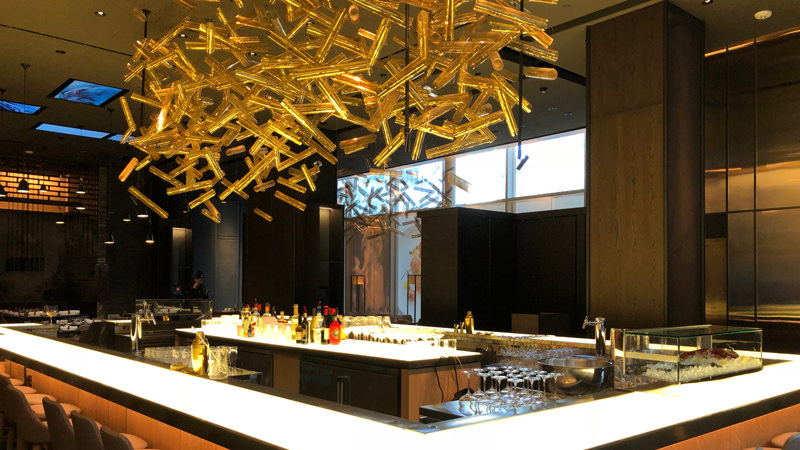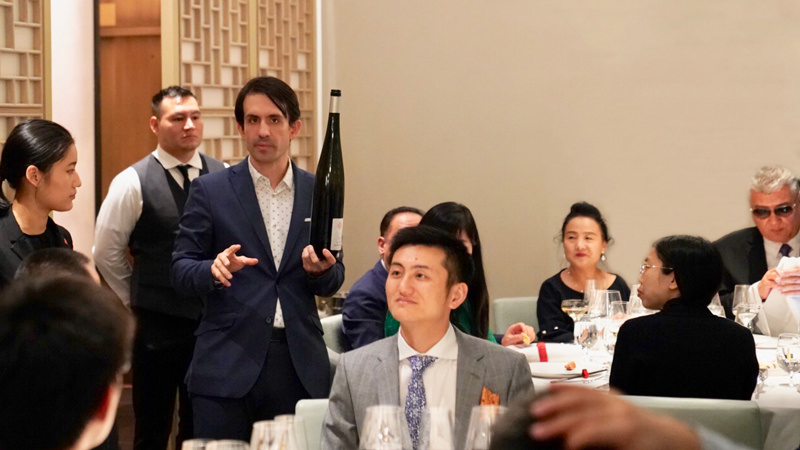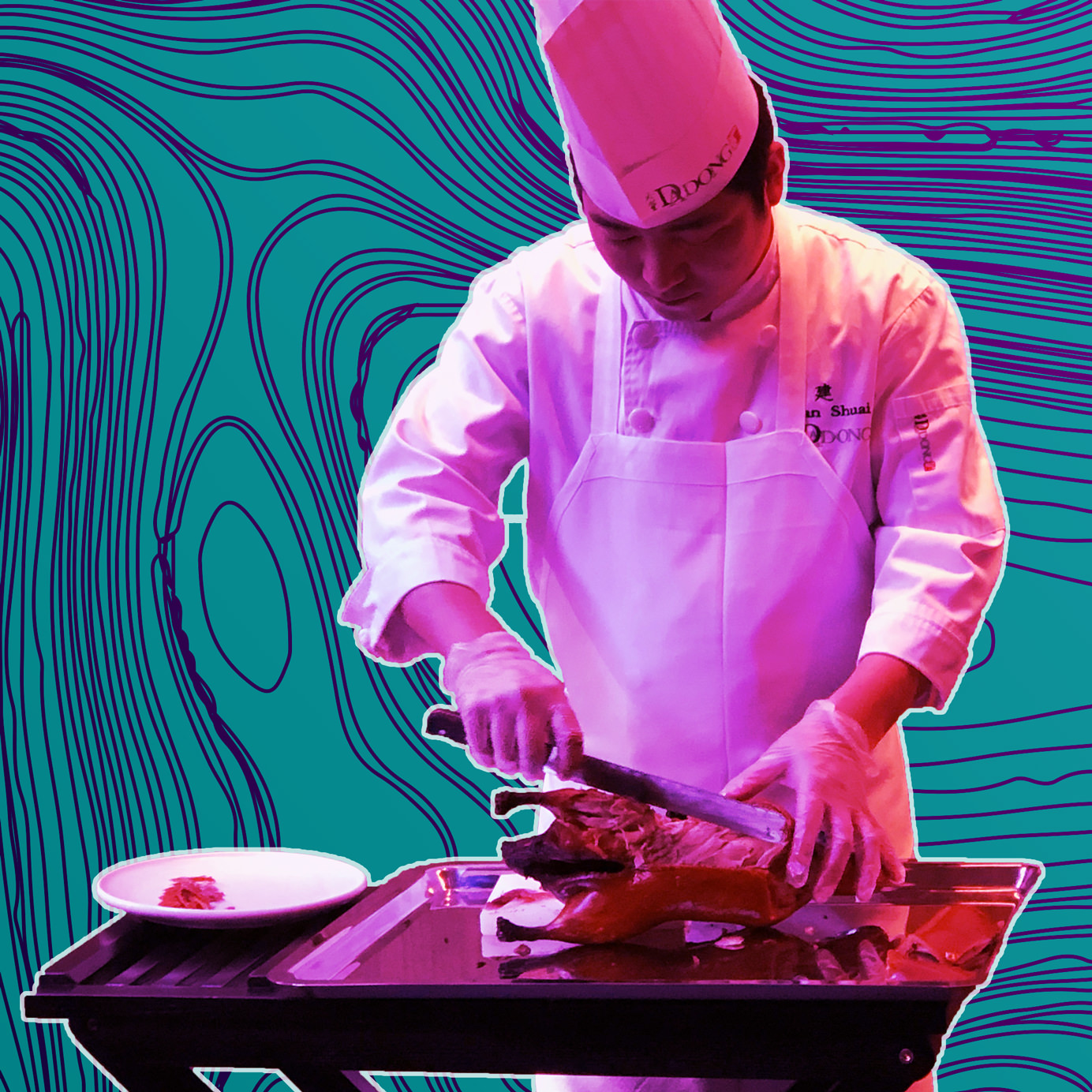Chinese food has a reputation. And, like many reputations, it’s pretty unfair.
Most Americans are under the misconception that Chinese fare is not especially wine-friendly. Even though the Chinese are now the world’s largest consumers of Bordeaux, and Chinese fine dining is ascendant across the U.S., many diners can’t shake the illusion that the only thing one can reliably pair with a Chinese feast is light beer or tea.
“Culturally, we have to change the concept that you go to a Chinese restaurant that has great food, it’s generally got a white wine, a red wine, and some awful sparkling wine from somewhere,” sommelier Michael Scaffidi says.
Scaffidi knows of what he speaks. His résumé reads like a who’s-who in the restaurant world. He’s crafted wine lists for Jean-Georges, Union Square Café, and the French Laundry.

Last year, he tackled a unique challenge: Scaffidi was asked to join the New York outpost of DaDong, a group of wildly popular upscale Chinese restaurants famous for their Peking duck. At DaDong, the $98 whole duck feeds four and comes with pancakes, sauces, and an optional $42 caviar supplement.
The Bryant Park behemoth is the restaurant group’s first United States location, and chef Dong Zhenxiang was adamant about having a wine list that matched his particular brand of elevated Chinese food.
Scaffidi assembled around 300 bottles for DaDong. His list is dominated by Champagne and white Burgundy — his favorite things to drink — and offset by a heavy dose of California Chardonnay and Cabernet Sauvignon.
We caught up with Scaffidi for some tricks of the trade. Next time you’re overwhelmed by what to pair with your takeout, some Michelin-starred Peking duck, or anything in between, remember these five insights.
Skip the Riesling
Asian cuisines often get paired with Central European wines like Riesling, Grüner Veltliner, and Gewürztraminer.
Not so fast, says Scaffidi. “Conceptually, I thought I’m probably going to have some Austrian and German wines,” he says. “Then I tasted the food and said, actually no!”
If you are eating a more traditional Chinese dish that’s lighter on the spice, Scaffidi recommends Chablis or another white Burgundy. Approachable and fun, Chablis pairs beautifully with duck, and Scaffidi also recommends it for fish dishes.
There’s Never a Bad Time for Bubbles
The most straightforward choice for Chinese food is Champagne — and it doesn’t have to be a pricey one.
“I think Charles Dufour makes some of the most beautiful Champagnes and they’re very accessible,” says Scaffidi. “They have these gorgeous crazy labels, and in this era of bone-dry, zero-residual-sugar Champagnes, they’re great, and they’re fun to drink.”
Scaffidi is also a big fan of the organic, low-sulfur Champagne from André Beaufort, who treats his vines with homeopathic remedies. “These Champagnes have a bit of sweetness to them,” he says. “They are delicious with Chinese cuisine.”
Go big or go home
That magnum you’ve been eyeing? Go for it. Scaffidi has filled his list with affordable magnums and wants to encourage groups of four diners, and even couples, to make the commitment to a larger bottle.
Magnums, after all, can offer considerable savings, particularly among up-and-coming wine regions and from smaller producers. Large-format bottles also age better, and more slowly, than their 750-milliliter peers because the ratio of surface area to wine is much greater.
And, let’s be honest, they look really cool.

Opt for lighter reds
If you lean toward red wines, you can’t go wrong with cru Beaujolais. “Crunchy, fun, crushable red wines always work so well,” Scaffidi says.
This somm favorite is fruit-forward and easy-drinking, and usually clocks in at a fraction of high-quality Burgundy prices.
Have fun
The first rendition of Scaffidi’s wine list for DaDong was based on the Chinese zodiac. “We were in 2017, and that was all based on the Year of the Rooster, so the first page of the wine list, I featured wines that are specifically from rooster vintages, meaning 2005, 1993, 1981, and so on,” he says. “And so this current rendition is all based on the Year of the Dog. The vintage wines featured on the first page are from 2006, 1982, 1994, 1970, and 1958.”
In other words: Have fun with it.
Next time you’re shopping for wine to accompany a Chinese feast, you can focus on texture and flavor, or you can focus on something as personal as vintage. “Everyone can connect with a vintage,” Scaffidi says. “Everyone is born a year or has an anniversary, a birthday, or special moment that you can connect wine with. There are all kinds of episodic moments that work with the whole concept of vintage.”
